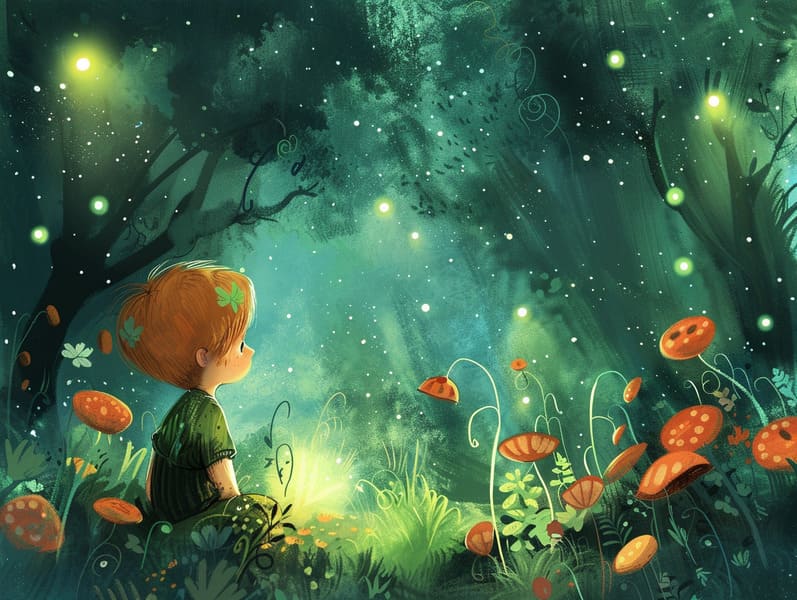A Brief History of Bedtime Fairy Tales with Their Unceasing Splendor.
A Brief History of Bedtime Fairy Tales with Their Unceasing Splendor.
Blog Article

Legendary fairy tales have historical significance. These stories have been whispered from one generation to the next long before they were ever put on paper. They arose from a variety of societies, including Western traditions. They were initially told among adults, often carrying themes and messages concerning the societal norms and beliefs of the time.
The Grimm brothers, the two Grimm brothers, were among the first to compile and release many of these beloved narratives. Their compilation, "Grimm's Story Collection," included classics like "Cinder Maid," "Hansel and Gretel," and "Little Snow White," which have since become mainstays in the world of beloved fairy tales. Similarly, H. C. Andersen's fanciful tales, such as "The Mermaid's Tale," and "The Little Duckling," have stolen hearts worldwide, guaranteeing their place in the pantheon of famous fairy tales.
Though they are centuries old, fairy tales remain as meaningful as ever, especially as nighttime stories for kids. These enchanting tales are now available in multiple formats, including beautifully illustrated books, magical animations, and free fairy tales online.
Their persistent charm can be connected to several fascinating points:
Significant Morals: Timeless fairy tales often present important moral lessons. Narratives like "The Wolf and the Liar" teach the merit of integrity, while "The Story of the Tortoise and the Hare" stress the values of tenacity and unpretentiousness. These stories offer kids clear distinctions between right and wrong, helping to shape their moral compass in a tender yet impactful way.
Kindness and Comprehension: Timeless fairy tales frequently portray heroes facing obstacles and hardships, inspiring listeners to empathize with their struggles and back their triumphs. For instance, "The Story of Beauty and the Beast" emphasizes the merit of appreciating inner worth to recognize the inner self of a soul, nurturing insight and awareness.
Cultural Insights: Many fairy tales are infused with the cultural contexts from which they developed. Discovering these tales can provide enlightening views into different ways of life, developing a sense of global appreciation and awareness.
Inventiveness and Imagination: The whimsical elements in classic fairy tales—magical beings—motivate children’s fantasy worlds. These stories transport readers to supernatural realms, stimulating imaginative ideas and a sense of marvel that continues a lifetime.
Ancient fairy tales are not only captivating but also instructive. They serve as magical tools in nurturing various mind and heart abilities in the young. When traditional fairy tales are voiced, they develop verbal development by showing new phrases and elaborate sentence structures. This practice also strengthens hearing perception and attentiveness, as young ones focus on every detail, keen to see check it out what happens next.
Furthermore, analyzing the themes and characters of classic fairy tales can develop problem-solving abilities and thought processes. The young are shown to discern patterns, expect results, and grasp cause and effect. These debates also ease children speak out their thoughts and feelings, cultivating their emotional intelligence.
In today’s online age, the prevalence of online storybooks has made these stories more within reach than ever. Web-based platforms and applications give ample collections of famous fairy tales that can be read or listened via anytime, anywhere. Fairy tales spoken are particularly sought after, featuring an interactive way for children to relish these magical stories. Read-aloud stories and read-to-me stories guide characters and settings to life, often complemented by captivating music and soundtracks that intensify the storytelling experience.
The unfading fascination of timeless fairy tales lies in their ability to adapt to modern society while maintaining their main lessons. Contemporary updates of these narratives often highlight more diverse characters and modern settings, making them relevant to today’s audience. However, the underlying themes of gallantry, warmth, and even-handedness remain unchanged, continuing to impact young readers of all ages.
Traditional fairy tales also offer a sense of protection and knownness. They feature a well-structured narrative with a definite beginning, middle, and end, often closing with the conclusion of conflicts and the triumph of truth over falsehood. This consistency can be comforting for young readers, making available a sense of assuredness in an variable world.
Ancient fairy tales continue to entrance and guide new generations, maintaining their elegance and relevance in modern society. As children's bedtime stories, they grant a perfect blend of captivation and insight, furthering moral values, empathy, and creativity. The presence of online fairy tales and the widespread nature of fairy tales read aloud affirm that these timeless tales remain available to new generations.
By upholding and spreading these narratives, we continue to extol the rich tapestry of storytelling and cultural heritage. Whether you are perusing a vibrantly illustrated book, experiencing a cyber collection, or hearing an narrated book, the delight of bedtime fairy tales is always within reach. These fairy tales convey of the unchanging impact of stories and its ability to hold us together across generations and cultures.
Regardless if you are experiencing a beautifully illustrated book, experiencing a internet library, or listening to an audio story, the elegance of traditional fairy tales is always within reach.
These stories convey of the everlasting strength of storytelling and its ability to unite us across eras and regions, making a tie that charms and informs alike.